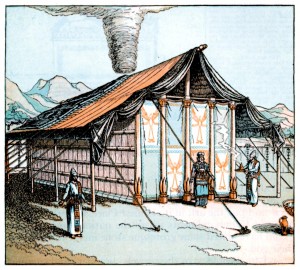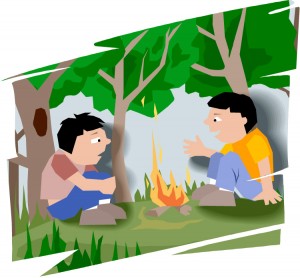Numbers 4:6, Badger skin [Heb. tachash]. When being transported, the ark of the covenant was covered with a tachash skin, which, according to rabbinic tradition was an unusually beautiful color of turquoise blue made from the hide of a now extinct animal. According to The ArtScroll Stone Edition Chumash, this striking color of blue invited one to keep YHVH’s Torah-commandments by clothing them in physical beauty thus showing that obedience to them would be enjoyable (p. 745). Is obeying YHVH, keeping his commands, inviting and enjoyable, or is it a burden? In 1 John 5:1–3 we read:
Whosoever believes that Yeshua is the Messiah is born of Elohim, and every one that loves him that begot loves him also that is begotten of him. By this we know that we love the children of Elohim, when we love Elohim, and keep his commandments. For this is the love of Elohim, that we keep his commandments: and his commandments are not grievous [burdensome, severe, cruel, heavy].
John the apostle clearly states that obedience to Torah is centered on love—a love relationship between man and his Creator. John, in his Gospel, records Yeshua, the Living Torah-Word of Elohim, saying,
If you love me, keep my Torah-commandments (John 14:15).
Other scriptures that say the same thing in a different way include,
Owe no man any thing, but to love one another: for he that loveth another hath fulfilled the law.…Love worketh no ill to his neighbour: therefore love is the fulfilling of the law. (Rom 13:8, 10)
And now I beseech thee, lady, not as though I wrote a new commandment unto thee, but that which we had from the beginning, that we love one another.
And this is his commandment, That we should believe on the name of his Son Jesus Christ, and love one another, as he gave us commandment. (1 John 3:23)
By this we know that we love the children of God, when we love God, and keep his commandments.
For this is the love of God, that we keep his commandments: and his commandments are not grievous. (1 John 5:2–3)
And this is love, that we walk after his commandments. This is the commandment, That, as ye have heard from the beginning, ye should walk in it. (2 John 5–6)





